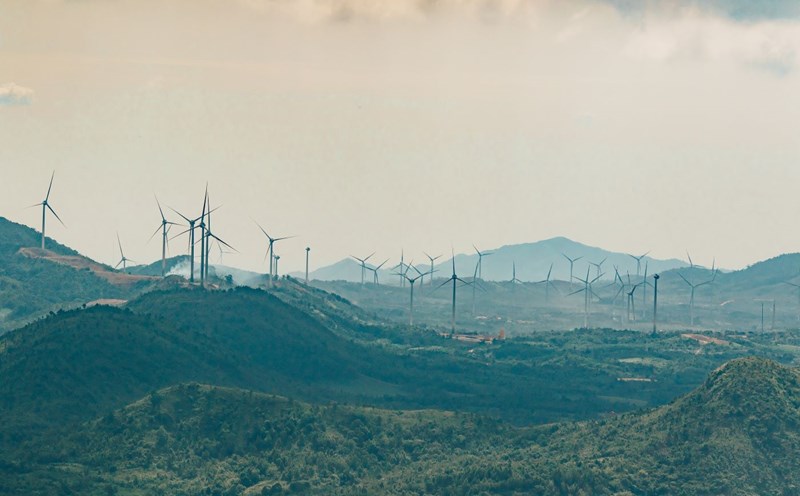Wind power is not only for the environment but also for livelihood

According to the adjusted VIII Power Plan, the total potential for onshore wind power is about 221 GW, while offshore it is up to 600 GW. This is an opportunity to not only promote the green economy but also create more jobs and improve livelihoods for people.
Sharing with PV Labor, Ms. Nguyen Thi Thanh Binh - Deputy General Director of T&T Group said that the wind power will play a key role in implementing Net Zero commitment by 2050. If implementing the right direction, the wind power can help Vietnam reduce hundreds of millions of tons of CO2 per year, and create hundreds of thousands of jobs in the fields of surveying, building, operating and maintenance of power plants.
T&T Group currently aims to achieve a total power generation capacity of 8,000 - 10,000 MW by 2030 and increase to 16,000 - 20,000 MW by 2035, accounting for about 10% of the total national power source capacity. This is not only a step forward in energy but also a strategic direction to reduce dependence on imported coal and gas, contributing to stabilizing electricity prices and ensuring long-term energy security.
Legal barriers, lack of capital and infrastructure are holding back wind power
Despite high expectations, the development of wind power in Vietnam still faces many difficulties. First of all, the legal corridor is not yet complete. Specific regulations on marine space planning, licensing of survey and development of offshore wind power are still lacking. This has caused many investors to struggle with procedures and delay project implementation.
In addition, the Ministry of Industry and Trade has not yet officially issued a price framework for power generation for offshore wind power projects. Although EVN has proposed prices for three key geographical areas, the lack of a clear price mechanism makes it difficult for investors to calculate financial efficiency.
Another major obstacle is technical infrastructure. Currently, Vietnam does not have a specialized seaport system for the transportation and installation of offshore wind power equipment. In addition, the power grid planning is not yet synchronous, many areas have high wind potential but do not have suitable power grid connections, leading to overload or inability to supply full capacity.
The domestic supply chain for the wind power industry has not yet clearly formed, relying heavily on imported equipment and technology, increasing costs and prolonging project implementation time. Meanwhile, high-quality human resources in the wind power sector, especially offshore, are still seriously lacking.
In addition, harsh natural conditions such as storms, floods and conflicts in the use of marine space ( catching, transportation, defense) are also potential risk factors for investors. Along with that, high investment costs and instability in policies have made many international corporations afraid, even withdrawing from the Vietnamese market.
Need for clearer and more stronger support policies
From that practice, Ms. Nguyen Thi Thanh Binh proposed a number of key solutions. First of all, it is necessary to complete the legal framework for wind power, especially offshore wind power, from marine space planning to specific licensing procedures. However, it is necessary to issue an electricity price framework early so that investors have a basis to implement projects and raise capital.
Infrastructure investment also needs to be promoted, especially the construction of specialized seaports, underground cables and appropriate transmission networks. To reduce dependence on foreign countries, it is necessary to develop domestic supply chains and increase the localization rate.
In addition, training engineers and technical experts for the wind power sector is very urgent. The State also needs to create an attractive financial mechanism such as long-term power purchase commitments, credit guarantees and attracting international green capital to reduce initial investment pressure.
Wind power is a golden opportunity for Vietnam to not only accelerate energy transition but also create more jobs, reduce pollution and increase autonomy in energy security. But to turn potential into reality, removing policy, financial and technical barriers is unlikely to be delayed.











